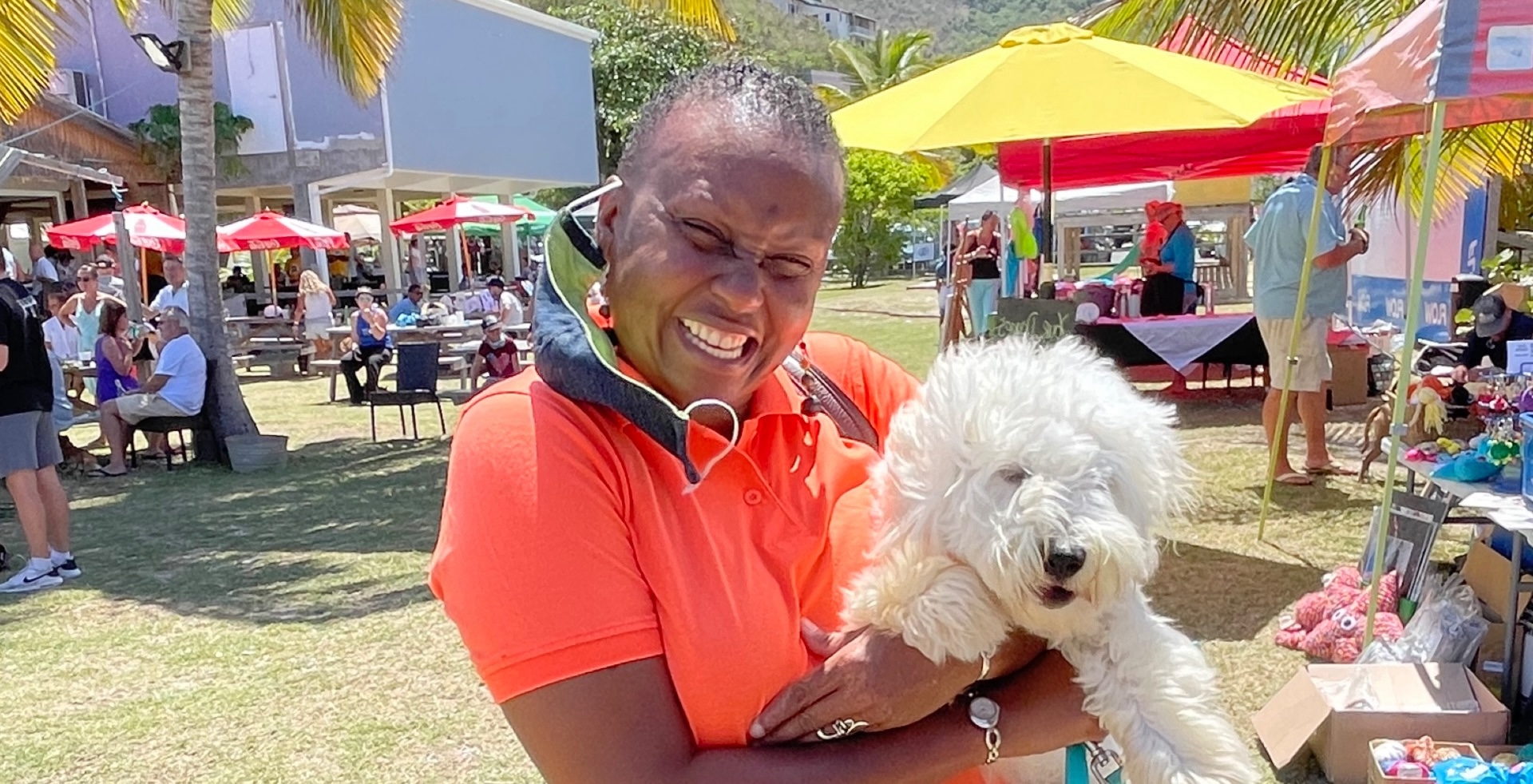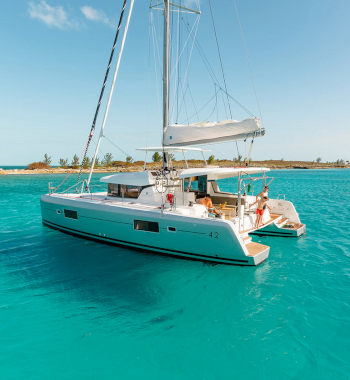VI National Parks: The Men Who Made them Great
By Claudia Colli
The BVI’s National Parks system is comprised of some of the area’s most beautiful and pristine areas, protecting the territory’s natural heritage for generations to come. Celebrating its 60th anniversary this year, the Virgin Islands National Parks Trust has been a leader in conservation since it was founded in July 1961.
Two men, BVI businessman JR O’Neal and American philanthropist Laurance Rockefeller were there from the beginning.
The Early Years
A rocky island with an agrarian economy, and an airport that was little more than a dirt landing strip, the BVI in the 1950s was poor and isolated. In contrast, Laurance Rockefeller, tall, well-dressed and urbane, was the son of privilege; John D. Rockefeller, the oil magnate was his father, and Nelson Rockefeller, the former governor of New York, his brother.
This wealthy and politically connected businessman and philanthropist, may have at first seemed out of place in the BVI seven decades ago. But Rockefeller,who had spent time sailing through both the US and British Virgin Islands, had grown to love their beauty and charm and saw their untapped potential. He built Caneel Bay, the area’s first luxury hotel on a sumptuous stretch of beach on St. John’s north shore in 1956 and surrounded it with an initial purchase of 5,000 acres of land, which he donated to the US National Parks Service. The bequest, which became St. John National Park, was the largest national park outside the US. With a sense of altruism and no shortage of financial resources, Rockefeller set out to do the same thing in the neighboring British Virgin Islands. In 1961 he leased 365 acres on Virgin Gorda from the BVI government with plans to build the luxury hotel, Little Dix Bay, a development that would help jumpstart the territory’s nascent tourism industry.
Aware of what Rockefeller had accomplished in the neighboring USVI, British Virgin Islands Administrator Captain G.J. Bryan approached Rockefeller to see if he could help the territory establish its own park system. It worked. Rockefeller donated sufficient money to the government to purchase 90 acres of land crowning Sage Mountain, the BVI’s highest peak, as well as seven acres at Spring Bay, locally known as the Crawl, and some 20 acres at Devil’s Bay, both on Virgin Gorda. These donations would become the basis of the BVI’s National Parks Trust which was established in 1961.
In the meantime, a BVI-born conservationist was busily making his mark. A self-made businessman, Joseph Reynold O’Neal ran the islands’ first pharmacy and had launched a number of other enterprises from a lumberyard to a photography studio. Born in Virgin Gorda in 1911, he spent the first part of his childhood in Cuba where his father had gone to work in the cane fields. His family settled on Tortola when Jose, as he was known, was nine. He spoke no English, but was a quick study, and as time went on, developed a knack for business. He pursued a course in pharmacy in St. Kitts, and returning to the BVI, he set up the J.R. O’Neal Drug Store whose building still stands on Main Street. Seeing into the future, he launched numerous other ventures including a Landrover dealership when there were still few drivable roads and importing electric generators at a time when the island was still largely lit by kerosene lamps.

O’Neal also served on the government’s Executive Council from 1948 to 1949 and again from 1954 to 1971, but his crowning achievement was his environmental work and his efforts as the National Parks Trust’s first chairman. An area of largely second growth forest, Sage Mountain was declared the territory’s first national park in 1964.
JR first met Laurance Rockefeller in 1965 when the philanthropist held a meeting of Caribbean politicians, conservationists and senior public servants at Caneel Bay to discuss environmental initiatives. From this meeting the Caribbean Conservation Association was born with JR as a founding member, and a friendship and long-term collaboration between the two men was formed.
As part of his Sage Mountain bequest, Laurance Rockefeller had donated an additional $10,000 to reforest Sage Mountain, which had once been covered in hardwoods including Mahogany and Bulletwood. J.R., who had been interested in reforestation since 1953 when he marked Queen Elizabeth II’s coronation by planting trees at the Old Recreation Ground, was the natural choice to head the project.
With the Rockefeller grant, O’Neal purchased mahogany seedlings from the United States Park Service in St. Croix in lots of 500 to 1,000 plants, but getting them to Sage Mountain was no easy task. With no drivable road to Sage Mountain, the seedlings were transported by mule. Eventually O’Neal and his staff, established a nursery at sage Mountain consisting of ten sheets of galvanized and four steel drums to store water. The nursery may have been a simple affair, but it worked, saving time, transportation and money. In the late 80s, JR asked Alfred O Shirley, who had recently retired from his post as Accountant General, to supervise improvements to the park. Under Shirley’s direction, additional trails were established opening up more sections to visitors, and signs were posted identifying them along with many of the trees.
JR O’Neal retained his post as chairman of the National Parks Trust for 30 years. Over these three decades, the National Parks Trust under O’Neal’s guidance went on to establish an additional 14 national parks. In 1988 the BVI National Parks Trust honored his service by naming the recently established botanic gardens, the Joseph Reynold O’Neal Botanic Garden, an honor that he greatly appreciated, he said. JR’Oneal died in 1994 at the age of 93.
The Parks Today
The scope of national parks in the BVI is impressive and each is breathtaking in its individual beauty. Today the Trust manages a total of 21 parks ranging from the spectacular Baths, the labyrinth of building size boulders which form a series of grottoes and sea pools on Virgin Gorda’s southwest shore to the Wreck of the Rhone, one of the Caribbean’s premier dive sites. Historical sites like the Mount Healthy Windmill, bird sanctuaries such as Great Tobago and the Botanical Gardens in Road Town are all areas of special significance and beauty.

Two of the organization’s most unique parks are the Coppermine located on a windswept bluff on Virgin Gorda, which was built by Cornish miners in the 1860s and Sandy Cay, a small island rimmed by a powdery sand beach off Jost Van Dyke. Originally owned by Laurance Rockefeller, Sandy Cay was managed as a private reserve until it was transferred to the National Parks Trust in 2007, three years after Rockefeller’s death.
With a dedicated staff which includes administrators and rangers, the Trust has established multiple collaborations to make the BVI’s park system and the islands’ ecology more resilient. Among them are ongoing projects with botanists and researchers from Kew Gardens in the UK. For more than a decade, the Kew researchers have made numerous trips to the British Virgin Islands as part of the Darwin Initiative, which conducts biodiversity assessments of countries throughout the UK’s Overseas Territories and is part of an effort to identify and protect native species.
In another important collaboration in 2014, Trust personnel worked with an international group of underwater geologists and hydrographic surveyors to survey the BVI’s seabed, update its navigational charts and determine the extent of the area’s marine biodiversity.

The Trust also manages a marine buoy system around popular dive sites and coral reefs to protect these sensitive areas from anchor damage. Although there is no national park on Anegada, the Trust runs the Head Start program there which takes the hatchlings from the native and critically endangered Anegada iguana and raises them in a protected facility until they are old enough to be released back into the wild. The Trust is also responsible for the reestablishment of the Roseate flamingo population on that island which had been hunted to extinction there in the 1950s.
In the six decades since the National Parks Trust ordinance was enacted, the Trust’s many and diverse initiatives have distinguished it as one of the prime protectors of the BVI’s wild and irreplaceable beauty. – Claudia Colli






